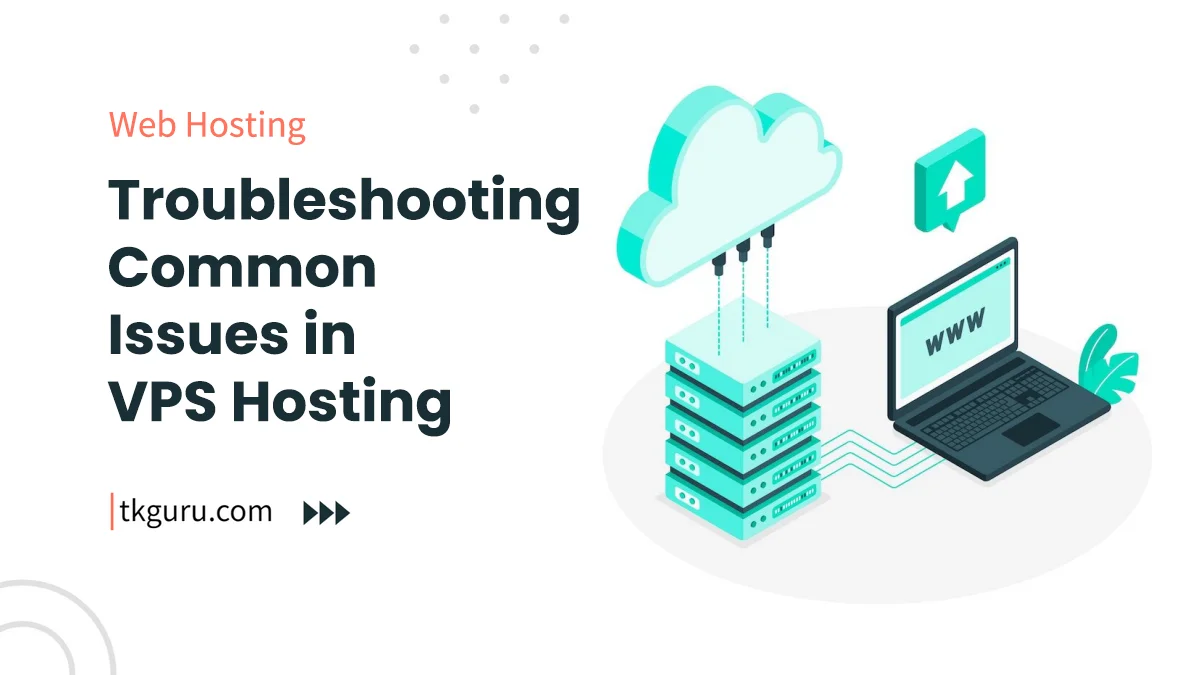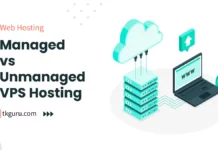Advertisements
Ratings

Troubleshooting Common Issues in VPS Hosting – In the digital landscape, Virtual Private Server (VPS) hosting offers a versatile and efficient way to host websites, applications, and databases.
However, like any technology, VPS hosting environments can encounter a range of issues that require troubleshooting.
This article aims to guide you through common challenges that arise in VPS hosting and provides actionable solutions to ensure a seamless hosting experience.
Section 1: Identifying Performance Bottlenecks: Performance is paramount in any hosting environment. Recognizing performance bottlenecks is crucial to maintaining an optimal VPS setup.
- Symptoms: Slow loading times, unresponsive applications, high resource utilization.
- Diagnosis Techniques: Utilize monitoring tools like top, htop, and iostat to identify resource-heavy processes.
- Solution: Optimize resource usage by upgrading hardware, optimizing code, and utilizing content delivery networks (CDNs) to distribute assets.
Section 2: Network Connectivity Problems: Smooth network connectivity is fundamental for user experience. Various network issues can hinder VPS hosting environments.
- Common Issues: Slow network speeds, intermittent connectivity, DNS resolution problems.
- Diagnosis and Troubleshooting: Perform ping and traceroute tests to analyze network routes and identify bottlenecks.
- Solution: Check network configurations, DNS settings, and consider using a more reliable DNS service.
Section 3: Disk and Storage Challenges: Disk and storage issues can impact data integrity and application performance, causing disruption in VPS environments.
- Common Problems: Disk space exhaustion, poor disk I/O performance, data corruption.
- Diagnosis and Troubleshooting: Use tools like df, du, and smartctl to monitor disk space and health.
- Solution: Regularly clean up unnecessary files, optimize databases, and consider upgrading to SSD storage for better performance.
Section 4: Security Concerns and Mitigation: Security is paramount in hosting environments. VPS instances are vulnerable to attacks that can compromise data and functionality.
- Security Challenges: Unauthorized access, malware infections, Distributed Denial of Service (DDoS) attacks.
- Preventive Measures: Implement firewalls, regularly update software, use intrusion detection systems (IDS), and enable brute-force protection.
- Solution: Regularly update and patch applications, and consider using a Web Application Firewall (WAF) to filter malicious traffic.
Section 5: Software Configuration Hiccups: Misconfigured software can lead to application crashes and compatibility issues in VPS hosting environments.
- Common Challenges: Application crashes, software incompatibility, broken dependencies.
- Diagnosis and Troubleshooting: Analyze log files and error messages to pinpoint the root cause of crashes.
- Solution: Double-check software configurations, dependencies, and apply necessary updates.
Section 6: Resource Allocation and Scaling: Proper resource allocation and scaling are vital for maintaining consistent performance during traffic spikes.
- Resource Issues: Running out of resources, server overload during traffic surges.
- Scaling Solutions: Implement auto-scaling solutions to dynamically adjust resources based on demand.
- Solution: Regularly monitor resource utilization and plan for scalability by selecting an appropriate hosting plan.
Section 7: Error Messages and Logs Interpretation: Interpreting error messages and logs is a fundamental skill in troubleshooting VPS issues.
- Importance of Logs: Logs provide crucial insights into errors, warnings, and events.
- Interpretation Techniques: Focus on error codes, timestamps, and contextual information to understand the issue’s nature.
- Solution: Regularly review logs, document recurring issues, and research solutions based on error messages.
Section 8: Customer Support and External Help: When issues become complex, seeking assistance is essential for efficient troubleshooting.
- Customer Support: Reach out to your VPS hosting provider’s support team for expert assistance.
- Online Communities: Participate in online forums and communities to gain insights from experienced users.
- Solution: Utilize external resources and expertise to resolve challenging issues effectively.
Comparison Table: Common Issues with VPS Hosting Environment
Here’s a table summarizing the common issues in VPS hosting environments, their symptoms, diagnosis, and solutions:
| Issue | Symptoms | Diagnosis and Troubleshooting | Solutions |
|---|---|---|---|
| Performance Bottlenecks | Slow loading, unresponsive apps, high resource usage. | Monitor resource-heavy processes using tools like top, htop, iostat. | Optimize code, upgrade hardware, utilize CDNs. |
| Network Connectivity | Slow network speeds, intermittent connectivity, DNS issues. | Perform ping and traceroute tests to analyze network routes. | Check network configurations, DNS settings, consider reliable DNS service. |
| Disk and Storage | Disk space exhaustion, poor disk I/O, data corruption. | Use tools like df, du, smartctl to monitor disk space and health. | Clean up files, optimize databases, consider SSD storage. |
| Security Concerns | Unauthorized access, malware, DDoS attacks. | Implement firewalls, update software, use IDS, enable brute-force protection. | Update and patch applications, consider using a WAF. |
| Software Configuration | Application crashes, incompatibility, broken dependencies. | Analyze log files, error messages to identify root cause. | Double-check software configurations, dependencies. |
| Resource Allocation | Running out of resources, server overload during spikes. | Monitor resource utilization, plan for scalability. | Implement auto-scaling, choose suitable hosting plan. |
| Error Messages and Logs | Error messages, warnings, events in logs. | Interpret logs, focus on error codes, timestamps. | Regularly review logs, document recurring issues. |
| Seeking Help | Complex issues requiring expert assistance. | Reach out to hosting provider’s support, participate in online communities. | Utilize external resources, seek professional help. |
Note: The table concisely summarizes the common issues, their symptoms, recommended diagnosis and troubleshooting steps, as well as the corresponding solutions for each issue.
Conclusion: Troubleshooting common issues in VPS hosting environments is a crucial aspect of maintaining a reliable and high-performing online presence.
By understanding and addressing the challenges related to performance, network, storage, security, software, resources, error logs, and seeking external help, you can ensure that your VPS hosting environment remains stable and responsive.
Regular monitoring, proactive measures, and a proactive approach to addressing challenges will contribute to a seamless and optimal VPS hosting experience.
Troubleshooting Common Issues in VPS Hosting FAQs
What are common issues that can arise in VPS hosting?
Common issues in VPS hosting include slow performance, website downtime, connectivity problems, software conflicts, security breaches, and resource allocation issues.
How can I troubleshoot slow performance on my VPS hosting?
To troubleshoot slow performance, check for resource bottlenecks, optimize your website's code, consider using a content delivery network (CDN), and ensure that your VPS has sufficient resources allocated.
What should I do if my VPS hosting experiences downtime?
If you experience downtime, first check your server's logs for error messages. Monitor server resources, review recent changes, and contact your hosting provider for assistance.
Implement redundancy and consider a reliable monitoring service.
How do I troubleshoot connectivity problems to my VPS hosting?
If you're facing connectivity issues, check your server's firewall settings, network configurations, and IP whitelists.
Verify your domain's DNS settings, and ensure that your VPS's network is functioning properly.
How can I resolve software conflicts in VPS hosting?
To address software conflicts, update software and plugins to their latest versions, disable conflicting plugins, and review logs for error messages.
Isolate the problematic software and consider reaching out to the software's support community.
Troubleshooting common issues in VPS hosting requires a systematic approach, including identifying the root cause, checking server logs, monitoring resource usage, and applying appropriate fixes.
If you're unsure about troubleshooting, reach out to your hosting provider's support team for guidance.
| Web Hosting | Website |
| WordPress | Google Adsense |
| SEO | Affiliate Marketing |
| Blogging | YouTube |
Recent Posts
- 5 Best WordPress Hosting Provider in Somalia 2023
- 5 Best WordPress Hosting Provider in Austria 2023
- 5 Best WordPress Hosting Provider in Luxembourg 2023
- 5 Best WordPress Hosting Provider in Switzerland 2023
Related Tags






